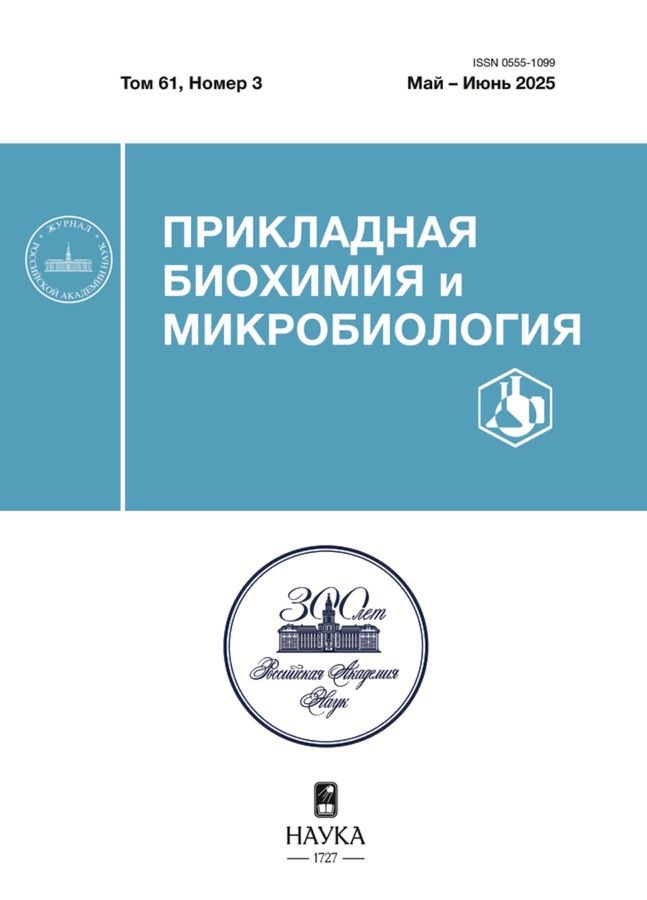Разработка поляризационного флуоресцентного иммуноанализа сульфатиазола и его применение для тестирования меда
- Авторы: Нестеренко И.С.1, Гендриксон О.Д.2, Смирнова Н.И.2, Еремин С.А.3, Сотников Д.В.2
-
Учреждения:
- Всероссийский государственный центр качества и стандартизации лекарственных средств для животных и кормов
- Институт биохимии им. А.Н. Баха, Федеральный исследовательский центр “Фундаментальные основы биотехнологии” Российской академии наук
- Московский государственный университет им. М.В. Ломоносова, химический факультет
- Выпуск: Том 59, № 1 (2023)
- Страницы: 96-102
- Раздел: Статьи
- URL: https://cardiosomatics.ru/0555-1099/article/view/674647
- DOI: https://doi.org/10.31857/S0555109923010051
- EDN: https://elibrary.ru/CUSONF
- ID: 674647
Цитировать
Полный текст
Аннотация
Разработан поляризационный флуоресцентный иммуноанализ (ПФИА) для выявления остаточных количеств антибактериального препарата сульфатиазола из класса сульфаниламидов, применяемого для профилактики и лечения инфекционных заболеваний пчел. Определены условия проведения ПФИА, обеспечивающие достижение высоких аналитических характеристик. Продолжительность ПФИА составляла 5 мин, предел обнаружения – 3 нг/мл. Показана высокая селективность ПФИА по отношению к сульфатиазолу; коэффициенты перекрестного реагирования для других сульфаниламидов не превышали 3%. Подтверждена эффективность обнаружения сульфатиазола разработанным ПФИА в пробах меда, для тестирования которых выбрана оптимальная методика пробоподготовки. Полученные результаты демонстрируют возможности использования разработанного иммуноанализа для быстрого и чувствительного контроля качества и безопасности меда.
Об авторах
И. С. Нестеренко
Всероссийский государственный центр качества и стандартизации лекарственных средствдля животных и кормов
Email: sotnikov-d-i@mail.ru
Россия, 123022, Москва
О. Д. Гендриксон
Институт биохимии им. А.Н. Баха, Федеральный исследовательский центр“Фундаментальные основы биотехнологии” Российской академии наук
Email: sotnikov-d-i@mail.ru
Россия, 119071, Москва
Н. И. Смирнова
Институт биохимии им. А.Н. Баха, Федеральный исследовательский центр“Фундаментальные основы биотехнологии” Российской академии наук
Email: sotnikov-d-i@mail.ru
Россия, 119071, Москва
С. А. Еремин
Московский государственный университет им. М.В. Ломоносова, химический факультет
Email: sotnikov-d-i@mail.ru
Россия, 119991, Москва
Д. В. Сотников
Институт биохимии им. А.Н. Баха, Федеральный исследовательский центр“Фундаментальные основы биотехнологии” Российской академии наук
Автор, ответственный за переписку.
Email: sotnikov-d-i@mail.ru
Россия, 119071, Москва
Список литературы
- Pasupuleti V.R., Sammugam L., Ramesh N., Gan S.H. // Oxid. Med. Cell Longev. 2017. V. 1. P. 259–510.
- Samarghandian S., Farkhondeh T., Samini F. // Pharmacognosy Res. 2017. V. 9. № 2. P. 121–127.
- Reybroeck W., Daeseleire E., De Brabander H.F., Herman L. // Vet. Microbiol. 2012. V. 158. № 1–2. P. 1–11.
- Bacanlı M., Başaran N. // Food Chem. Toxicol. 2019. V. 125. P. 462–466.
- Arsène M.M.J., Kitio A., Podoprigora I.V., Smolyakova L.A., Sarra S., Khelifi I., Das M.S. // Vet. World. 2022. V. 15. № 3. P. 662–671.
- Martinello M., Baggio A., Gallina A., Mutinelli F. // J. Agric. Food Chem. 2013. V. 61. № 38. P. 9275–9279.
- ТР ТС 021/2011. Технический регламент Таможенного Союза о безопасности пищевой продукции. М.: Изд-во стандартов, 2011. 27 с.
- Commission Regulation (EU) No 37/2010 of 22 December 2009 on pharmacologically active substances and their classification regarding maximum residue limits in foodstuffs of animal origin. // Official J. European Communities. 2010. N L15. P. 1–72.
- Moretti S., Saluti G., Galarini R. // In: Honey Analysis. / Eds. Vagner De Alencar, Arnaut De Toledo. Chapter 15. London: Intechopen, 2017. P. 325–365.
- de Campos V.M., Andrade M.A., Maciel E.V.S., de Toffoli A.L., Lanças F.M. // Food Addit. Contam. Part A. 2022. V. 39. № 5. P. 925–937.
- Dubreil-Chéneau E., Pirotais Y., Verdon E., Hurtaud-Pessel D. // J. Chromatogr. A. 2014. V. 1339. P. 128–136.
- Hassani N.E.A.E., Baraket A., Neto E.T.T., Lee M., Salvador J.P., Marco M.P. et al. // Biosens. Bioelectron. 2017. V. 93. P. 282–288.
- Li X., Yang Y., Miao J., Yin Z., Zhai Y., Shi H., Li Z. // Rev. Argent. Microbiol. 2019. V. 51. № 4. P. 345–353.
- Tumini M., Nagel O G., Althaus R.L. // Electrophoresis. 2020. V. 41. № 18–19. P. 1584–1591.
- Ouyang S., Yu S., Le Y. // Foods. 2022. V. 11. № 6. Article 803. https://doi.org/10.3390/foods11060803
- Adunphatcharaphon S., Elliott C.T., Sooksimuang T., Charlermroj R., Petchkongkaew A., Karoonuthaisiri N.J. // J. Hazard. Mater. 2022. V. 432. Article 128706. https://doi.org/10.1016/j.jhazmat.2022.128706
- Rodriguez R.S., O’Keefe T.L., Froehlich C., Lewis R.E., Sheldon T.R., Haynes C.L. // Anal. Chem. 2021. V. 93. № 1. P. 23–40.
- Hendrickson O.D., Taranova N.A., Zherdev A.V., Dzantiev B.B., Eremin S.A. Sensors. 2020. V. 20. № 24. Article 7132. https://doi.org/10.3390/s20247132
- Xiao X., Zhen S. // RSC Adv. 2022. V. 12. № 11. P. 6364–6376.
- Wang Z., Zhang S., Nesterenko I.S., Eremin S.A., Shen J. // J. Agric. Food Chem. 2007. V. 55. № 17. P. 6871–6878.
- Zhang S., Wang Z., Nesterenko I.S., Eremin S.A., Shen J. // Int. J. Food Sci. Tech. 2007. V. 42. № 1. P. 36–44.
- Murtazina N.R., Eremin S.A., Mozoleva O.V., Everest S.J., Brown J.A., Jackman R. // Int. J. Food Sci. Tech. 2004. V. 39. № 8. P. 879–889.
- Wang Z., Zhang S., Ding S., Eremin S.A., Shen J. // Food Addit. Contam. Part A. 2008. V. 25. № 5. P. 574–582.
- Eremin S.A., Smith D.S., Landon J., Jackman R. // Analyst. 1994. V. 119. № 12. P. 2723–2726.
- Uhrovcik J. // Talanta. 2014. V. 119. P. 178–180.
- Mateo R., Bosch-Reig F. // Food Chem. 1997. V. 60. № 1. P. 33–41.
- Schwaiger I., Schuch R. // Deutsche Lebensmittel-Rundschau. 2000. V. 96. № 3. P. 93–98.
Дополнительные файлы















